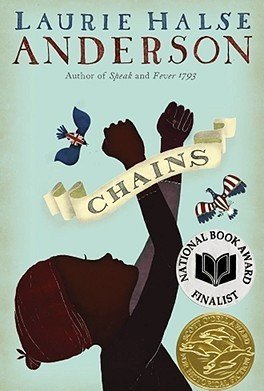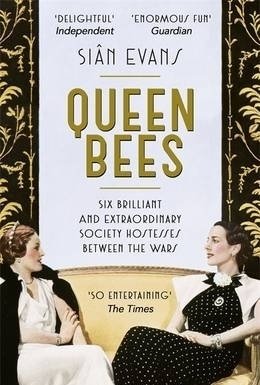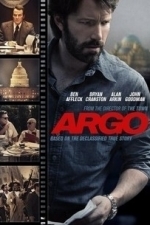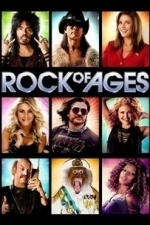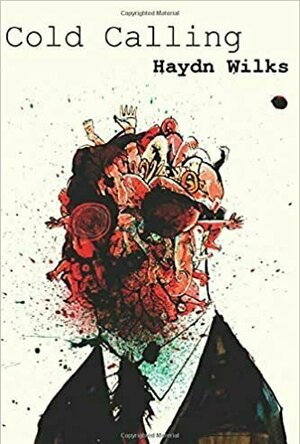Haley Mathiot (9 KP) rated Primary Victim in Books
Apr 27, 2018
Genre: Crime Fiction, Crime thriller
Rating: 4.5/5
Summary (from back of book): A serial killer whose victims don’t die. An innocent man who believes he is guilty. A police officer who may solve the crime but in doing so gives the killer exactly what he wants. A legal defense that challenges the very core ideals of justice.
Primary Victim is a thriller that tests both the psychological breaking point of an individual and the strength of the legal system governing society.
Review:
I’ll admit up front that I have a weakness for crime fiction—but this book was amazing. Words escape my mind as I try to explain how blown away I am by this book. I gasped and grinned and nearly cried and laughed at the surprises thrown at me through this stunning debut novel.
The psychological aspect of PRIMARY VICTIM was mainly found in the “Victim,” Brice. I won’t say what happens to him, but it amazed me as his mind began to twist and change through the course of the story.
The plot: PRIMARY VICTIM was full of twists and turns that I never expected, and it had me sitting on the edge of my seat the entire time. I couldn’t put it down! The viewpoint alternates between the criminal, the police officer, and the (living) victim, and switches back and forth at the most inconvenient places, forcing you to read on.
Characters: All the characters in PRIMARY VICTIM were strongly developed with real personalities. I hate books where people are just to perfect to be real (what I call “happyland syndrome”)—this book had the good guys and the bad guys, the the ones you hoped it all worked out for them, and the ones that you wished would be the next to die because they were such jerks (cough Nick cough).
By the end of the book I wasn’t sure what Michael (the criminal) was going to pull out of his hat, and was, from the very first page to the very last, impressed with Michael’s genius and creativity. At times I actually found myself almost cheering for him, but had to remind myself that he was the bad guy. It was almost hard to see him as the bad guy at times, because of his “work—” Michael considered himself a God in a world that needed one and didn’t have one, victimizing the people that he thought needed to be victimized.
Brice and Sarah were such a perfect yet sad couple, and for the sake of keeping the review spoiler-free, I won’t say anything… but I thought I was going to cry at one point.
Writing: The writing was the weakest point of this book. The prose itself seemed written in an unfamiliar style, minimizing comas in the sentences, and it made for a harder read. I caught myself occasionally re-reading sentences and paragraphs to understand what had happened. Aside from the prose, the vocabulary was broad enough and the pacing was good.
As of now, PRIMARY VICTIM is unedited, but there is only an occasional grammatical error, formatting error, or typo scattered through the book. However, all in all, it didn’t take away from the story.
Content: There was brief mention of sex between husband and wife (example: “they made love,” no other details, and the fact that they’re married made it that much better), and an occasional foul word from an angry officer, but other than that this book was refreshingly clean. I applaud Christopher for writing a crime thriller with low content—especially compared to some of the other crime thrillers out there. Maybe he can start a revolution. It’s true, people—you can have a good book without excessive sex and language!
Recommendation: Ages 14+ to lovers of Crime fiction, thrillers, and psychological thrillers.
Cassie Osbourne (6 KP) rated Chains (Seeds of America, #1) in Books
Nov 9, 2018
I first read this book in 2010 when I was thirteen while I was stuck at a grammar school open evening that my sister was at. I went to the library and started reading 'Chains' instead of having to traipse around hearing about how many geniuses of that school got into Oxford and Cambridge. I was so hooked that I felt that I couldn't leave without it so I stuck it up my jumper and nicked it. I have recently (and legally) got my hands on a copy of 'Ashes', the final book in the trilogy and so am rereading the first two books which I haven't done in years. I am pleased to say that it is still as good as it was when I read it eight years ago.
While I do like well rounded, complex characters and relationships, there is certainly something to be said for simplicity. None of the characters has too much of a character arc in this book except for the protagonist, who is the one telling the story so this may have something to do with her being an unreliable narrator (something that you learn so much about in English A-Level). Did the characters seem a bit stereotypical and cliched at times? Yes, definitely. Did I really care? No, not especially.
The atmosphere was great throughout, especially in the prison scenes and when Isabel has a fever. Everything felt very real and detailed, right down to the last black hair ribbon stashed in a draw. Every chapter, every page, every sentence felt so real and grounded in reality which is difficult to find in a book.
I really enjoyed the writing style, it all suited Isabel's voice down to the ground. Something that I noticed more reading it this time than I did when I was younger were the extracts at the beginnings of the chapters as it is a really nice and easy way to contextualise what is going on in the chapter in comparison to the date in with the chapter is set. It also gives the book a much more political feel which, again, I didn't quite see as much when I was younger.
The plot as a whole is very good and well written but there were definitely some sections that were just not needed or justified at all. However, that is a very minor thing.
The only real downfall of this book was some of the logic. Isabel gets way too lucky too many times, especially since she is a young black girl with a very distinctive scar on her face. A lot of people just seem too nice to her given that she is a slave and the level of racism back then as well. There is one particular instance at the end with some fireworks that I just pure and simply didn't buy.
This book, as well as 'Forge', has been sitting on my shelf for years just waiting to be picked up again and reread. I am so happy that so many years after I read it the first time it is still just as good.
Characters: 8/10
Atmosphere: 9/10
Writing Style: 8/10
Plot: 8/10
Intrigue: 9/10
Logic: 7.5/10
Enjoyment: 10/10
A spectacle of celebrity, talent and burning ambition, <i>Queen Bees</i> combines the biographical stories of six ambitious women who helped to shape the standards of British society between the two world wars. Londoner Siân Evans is a cultural historian who has previously worked with the <i>Victoria and Albert Museum, National Trust </i>and <i>Design Museum</i>, and takes great lengths to thoroughly research into her written subject in order to portray a highly accurate insight to the lives of historical figures. Due to the non-existent political status of women in the early 1900s, the women featured in this book are virtually unknown today, yet they had a great impact during the 20s and 30s and helped to shape the Britain of today.
Although not necessarily born into it, circumstances such as marriage meant these six women were regarded as upper class. In no particular order, the names impacting on the social revolution and thus featured in <i>Queen Bees</i> are as follows: Lady Nancy Astor, the first female MP; Lady Sybil Colefax, who became a friend of Edward VIII; Lady Emerald Cunard, also connected with the royal family; Mrs. Ronnie Greville, a rather formidable woman; Lady Edith Londonderry, the founder of the Women’s Legion; and Laura Corrigan, the youngest of the set. Evans talks the reader through these women’s careers as professional hostesses as they compete to throw the better party, entertaining famous writers and actors as well as members of royalty, both national and foreign.
What is perhaps the most interesting, and indeed the most worth learning, is the way a couple of these women altered the future of the British monarchy. Without their interference the future George VI would never have married Elizabeth Bowes-Lyon, and without their involvement in the relationship between Edward VIII and Wallis Simpson, George VI would never have come to the throne. This is such an important aspect of British history that has been widely left out and ignored. Without these hostesses influence we would all be experiencing a slightly different life.
In terms of the actual writing, Siân Evans manages fairly well to engage the reader as she relates the factual story in a more or less chronological way. A slight issue is the quick, often undetected, move from one woman to the next, resulting in a lot of confusion about who is who particularly at the beginning of the book. A lot of the narrative features other key figures from the same period and often moves away from the main characters, which, whilst interesting, is not what the reader necessarily expected from a book whose title <i>Queen Bees</i> suggested it was only going to be about the women’s lives.
Footnotes, quotes and extracts from letters and diaries help to make the book appear reliable, factual and believable. Some of the content, without back up, would have seemed rather fanciful or exaggerated. <i>Queen Bees</i> can be read as a source of entertainment or as a citation for historical research. What is found within these pages is a more unbiased account of the early twentieth century than would be found in numerous male dominated history textbooks.
Mature readers of all ages are likely to gain something from reading <i>Queen Bees</i> – pleasure, knowledge etc., however it is most likely to appeal to the contemporary feminist. With this in mind, be aware that the six hostesses were not feminists of their time; they were not involved in Suffragette movements and were fairly content to live off money earned by their husbands or fathers. Yet, on the other hand, they impacted on the future of Britain as much as the male politicians of the time. Highly political in content, <i>Queen Bees </i>is worth reading to discover our own history, but be prepared for initial confusion over who is who and rather lengthy paragraphs.
Gareth von Kallenbach (980 KP) rated Argo (2012) in Movies
Aug 7, 2019
Director and star Ben Affleck has brought a new side to the story to light in the form of his new film “Argo”, which is based upon true events which have recently become declassified. The story centers around six workers of the embassy in Tehran, who fled the chaos when a disgruntled mob stormed the embassy walls. At that time it was unheard of for an embassy to be occupied as they host country and internal security were thought to of been more than adequate protection.
However for a country in a state of revolution, much less one that was extremely upset with America’s refusal to return the deposed Shah to face trial, security from the local populace was not available when the unthinkable happened.
After being turned away by the British and New Zealand embassies, the six escapees find refuge in the residence of the Canadian ambassador Ken Taylor (Victor Garber), who refuses to turn them away despite the volatile political situation harboring them would create should they ever be discovered.
On the other side of the world, C.I.A. Director Jack O’Donnell (Bryan Cranston), and his staff are desperately looking for a way to retrieve not only the Americans held hostage but also the six individuals currently being sheltered by the Canadian ambassador.
With few viable options available, save for the longshot of trying to get the refugees to bike through 300 miles of winter and soldier laden roads to the Turkish border, Tony Mendez (Affleck), is brought in to find other options.
One evening, Tony gets the idea to go to Iran posing as a Canadian filmmaker on a location scouting trip for an upcoming film. His plan is to pass the refugees off as part of his crew thanks to newly issued passports from the Canadian government.
In order to add validity to his plan, Tony recruits award-winning makeup artist John Chambers (John Goodman), and producer Lester Siegel (Alan Arkin), to help establish the necessary cover for the operation.
Soon Tony, John, and Lester have obtained a script for science fiction film named “Argo”, and the use the Hollywood trades and publicity machine to establish their back story of their production company and film project.
With time running down, Tony must venture alone to Tehran to meet with and prepare the refugees for extraction as well as firming up their cover with the local Iranian authorities.
What follows is a tense political thriller that is extremely well performed and captivating throughout. What really impressed me about the film was that Affleck expertly paced it and refrain from using such overused stereotypes such as car chases, fight sequences, and love scenes to tell the story.
The cast is exceptionally good all around and the film does a good job capturing the look and the atmosphere of the situation without ever becoming preachy and taking extreme political stances. Instead the focus is on real people caught in an extraordinary situation from which they were unprepared, and the extraordinary measures taken by good people in the United States and Canada who stepped up and did the right thing regardless of the cost to them personally or politically.
“Argo”, was an extremely pleasant surprise in one of the most enjoyable films I have seen this year. While I understand it would not be for everyone, I would not be surprised to see the film get a few Oscar nods come awards season as they would be in my opinion well deserved.
Gareth von Kallenbach (980 KP) rated Rock of Ages (2012) in Movies
Aug 7, 2019
It is lightly satirical, a parody at times, that seems to mock our beloved 80’s rock era, while honoring its eccentricities, its tight leopard print pants, big hair, shoulder pads and over the top MTV music videos.
I like to judge a movie not only by how it makes me feel but also by how the audience reacts. This wasn’t an in-your-face-slapstick comedy, yet the whole theater roared with laughter throughout the film. To sum up the experience of Rock of Ages, it’s like watching a string of 80’s music videos mashed into a weak plot, with well-timed laughing points. Some of us laughed because we remember being the ones with those crazy hair-dos and out-of-control fashion sense and some were just laughing because this movie was so well done. It walked the fine line between super over-the-top corny and truly honoring our rock heritage. This movie does play to a specific demographic of ages 30 to 50, those who, with great nostalgia, remember how the 80’s rock and fashion revolution shaped their lives.
As the song goes, just a small town girl, Sherrie Christian played by Julianne Hough, travels to the big city in search of her dreams of becoming a singer, where she meets her city boy, Drew Boley played by Diego Boneta. Together they embark on a musical romance while working at a rock club named The Bourbon Room. Alec Baldwin plays an old rocker named Dennis Dupree struggling to keep his legend of a night club/concert hall open. Russell Brand, as always, steps in as the comic relief while playing the club owner;s assistant named Lonny. Together they work to keep The Bourbon Room afloat while dealing with a vengeful Patricia Whitmore, played by Catherine Zeta-Jones, who wishes nothing more then to see The Bourbon Room burned to the ground.
There are points in this movie when the acting, the singing and yes, even the plot, grabs you and holds your attention, much like watching the train wreck we call 80’s fashion. Its painful but you can’t look away! There were other times in this movie when the singing felt like it would go on forever. I noticed that the low points would be immediately succeeded by a very entertaining turn of events, so my attention was not lost for long. There came a point, at about the third Glee style 80’s rock mash-up, where I felt like slapping the director, Adam Shankman. Even too much of a good thing can get boring and I felt Shankman reached that point several times in the film. Luckily, he redeemed himself by bringing in Tom Cruise to play the Satan worshiping, alcoholic, megalomaniacal rock god Stacee Jaxx who went above and beyond in perfecting his role.
This movie’s soundtrack features songs and power ballads from Guns N’ Roses, Def Leppard, Bon Jovi, Journey, Twisted Sister, Pat Benetar, Scorpions, Whitesnake, Poison, REO Speedwagon, Foreigner among other epic bands giving Rock of Ages it’s 80’s jukebox musical foundation.
Mary J. Blige, Cruise, Ale Baldwin, Boneta, Hough and the whole cast of mega stars went above and beyond in selling their characters and performing stunning and accurate vocals that really pulled this movie together. The corny 80’s fashion and authentic dance numbers were the real icing on the cake. If you can sit through two hours of 80’s rock and pop nostalgia and know you will enjoy it, then definitely check this movie out.

babylon: online doctor
Medical and Health & Fitness
App
HEALTHCARE FROM ANYWHERE babylon is a personalised healthcare service that gives you access to...
BookInspector (124 KP) rated Cold Calling in Books
Sep 24, 2020
This book about a guy named Rhys. He works in a call centre and lives really sad and monotonic life. He hates his job and actually his life. His life is a routine of work, porn websites after work, casual drink with friends he hates, sleep, repeat. One day after a lot of drinks, he kills a family, takes their baby, cooks it and eats it. And it somehow changes his life, and he needs more… So this book is about a guy who from being an ordinary boring dude, becomes a vicious and exciting murderer. The characters chosen for this book are just like normal, ordinary lads, very believable and you see these kinds of people every day. Haydn Wilks has quite a bit of experience working in call centres himself, and I appreciate, that he shared the details of it with the readers.
The plot of this book left me interested and grossed out at the same time. I like horror books, but this one overwhelmed me. There were some really nasty parts in here, and if I would be a meat eater, it would put me off from it for quite a while. The details of cooking human flesh, eating it, and sharing with others just gives me nausea. So if you got weak stomach and you are sensitive, this book is definitely not for you. I really enjoyed reading about Rhys’s psychotic plans of how to find new victims and how to preserve their bodies, I like when books give insights into murderers thoughts, I find that very interesting.
This book is quite short and really quick paced, so it is a quick read even though it doesn’t have chapters. This book is written in a very interesting manner, it is like a letter to yourself, about yourself. Here is the first paragraph of the book:
“You were born the year the Berlin Wall fell. For your generation, it’s impossible to conceive of life outside capitalism. It feels as permanent and natural as gravity or the four seasons. You were born into a system and you’ve inherited its world view. A person’s beliefs are shaped by their society. No preindustrial revolution European intellectuals were openly atheist. Human civilisation is an echo chamber. Imagine how ideas that are emerging now will get amplified and distorted over time. These are the thoughts that fill your head as you stare into the computer screen; at names and addresses and telephone numbers; black details on slow-blinding white.”
So this kind of writing style justifies the lack of chapters and brought something new to my reading spectra because I don’t remember reading anything similar. This book is easy to read and doesn’t have a difficult language. I don’t know was the author lazy or genius, but this book does not have an ending. The ending of the book tells the reader to create their own ending. As this is the first book I read by this author, I really don’t know if other books by this author have the same ending style, or it’s just this one. So, to conclude, this book was too strong for me, that’s why my rating for it is not the best. However, if you have a strong stomach, interested in behind the scenes of call centres, and like books about cannibalism, this one would be a great book for you.

Little - Deals around you
Lifestyle and Food & Drink
App
Littleapp helps you save money through awesome deals on everything near you! Restaurants,...

Golfshot: Golf GPS + Scorecard
Sports and Health & Fitness
App
Gain confidence on over 40,000 courses worldwide and trust in your game with Golfshot. Like a...

eCooltra scooter sharing
Travel and Lifestyle
App
How do you move around your city? Do you take your car every day and spend hours in traffic jams or...

